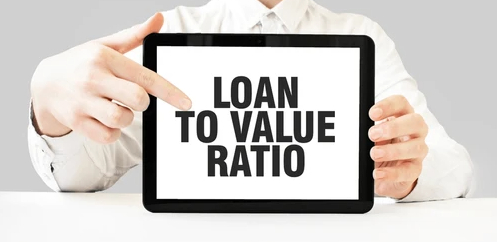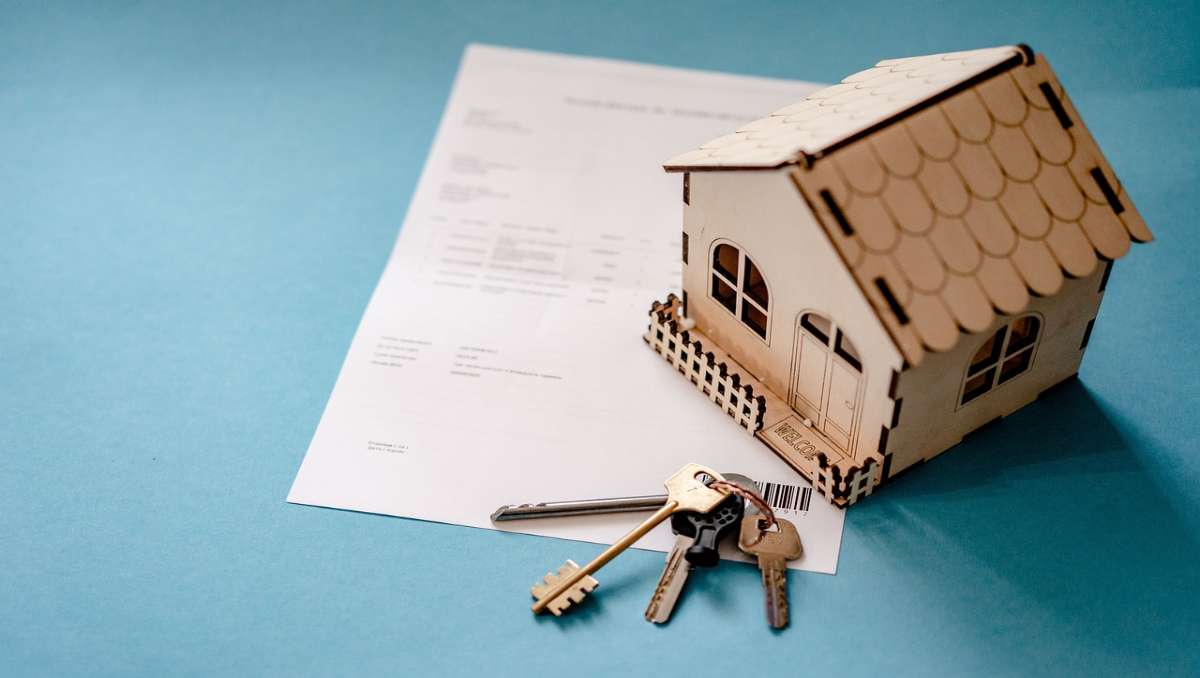Understanding Loan-to-Value Ratio (LTV)
July 28, 2025

If you’ve ever taken out a mortgage or simply browsed through real estate listings, you’ve heard the term loan-to-value ratio (or LTV ratio). It sounds technical, but it surprisingly influences how lenders evaluate you. If you know your LTV, you’ll get a better grasp of your financing choices and your position with a lender. In this guide, we’ll walk you through what LTV actually is, how it’s determined, and why it’s more important than most people give it credit for.
What is Loan to Value Ratio?
The loan-to-value ratio (LTV ratio) is a percentage lenders use as a way to estimate their risk. It is the comparison between the amount borrowed and the value an appraiser gives the property for purchase or refinance. The higher the LTV ratio is, the lower the amount of equity and the more risk for the lender.
To put it simply, LTV meaning comes down to this: how much of the property's value is being financed through a loan versus how much you’re putting in yourself. If you're putting down a 20% down payment on a home, for example, your LTV would be 80%. If you’re borrowing the full value, that’s a 100% LTV.
Why is this important? Because the LTV dictates everything from your home loan eligibility to your interest rate, and even whether you'll be required to purchase a mortgage insurance premium.
Loan-to-Value vs. Combined Loan-to-Value (CLTV): What’s the Difference?
You might confuse loan-to-value with combined loan-to-value (CLTV) because they sound so similar, yet they actually calculate different things.
What is the loan to value ratio again? LTV ratio simply looks at the primary mortgage in relation to the home's appraised value. Combined LTV, on the other hand, looks at all the loans that are secured upon the property, like a second mortgage or home equity line of credit (HELOC).
For instance, if the value of your home is $400,000 and you still owe $300,000 for a primary mortgage and an additional $50,000 for a second mortgage, the LTV is 75% but the CLTV is 87.5%.
While both ratios assist lenders in considering risk, CLTV provides a more complete picture particularly for debtors stacking several loans against one piece of real estate.

How to Calculate Loan to Value Ratio
The formula is simple:
Loan Amount / Appraised Property Value = Loan-to-Value Ratio
Let’s say you're buying a home appraised at $500,000 and taking out a loan for $400,000. Divide the loan amount by the property value ($400,000 ÷ $500,000), and you get 0.80 or an 80% LTV.
If you'd prefer not to do the math, an online loan to value ratio calculator can instantly do the numbers for you. These are particularly valuable if you're comparing multiple down payment situations or for a refinance. Simply input the loan and the property value and you can instantly find loan to value ratio numbers to help you make your decision. Knowing how to calculate the LTV ratio puts you in a stronger situation when you're negotiating with lenders.
Why is LTV Ratio Important?
Lenders care about one thing above all: risk. The loan-to-value ratio helps them estimate how likely you are to repay the loan and how much they might lose if you don’t. That’s why your LTV can influence so many parts of your loan offer, from interest rates to whether you’re approved at all.
A lower LTV generally means you’ve invested more of your own money into the property. That gives lenders confidence that you're less likely to default. And even if you do, there’s a better chance they can recover their losses by selling the property. On the flip side, a high LTV signals higher risk, which can lead to higher interest rates, stricter terms, or the requirement to buy private mortgage insurance (PMI).
In short, LTV is a reflection of how strong your financial position looks to a lender. And that perception can impact your loan in ways that go beyond just loan approval.

LTV Rules by Loan Type: FHA, VA, Conventional & Jumbo
All loans do not treat LTV equally. Depending upon the mortgage product for which you apply, the accepted rules associated with the limit for LTV differ considerably:
- Conventional loans typically require an LTV of 80% or lower to avoid PMI. However, some lenders allow up to 97% LTV with certain conditions.
- Federal Housing Administration or FHA loans, which are insured by the Federal Housing Authority, are less stringent. You could qualify for an FHA loan with as little as a 3.5% down payment and 96.5% LTV.
- VA loans, which are offered for military vets and active military personnel, allow for 100% financing. An LTV of 100% is allowable with no required PMI.
- Jumbo loans, beyond conforming loan thresholds, typically have more rigid LTV requirements. All lenders require a maximum LTV of 70–80%, particularly for the higher loan balances.
All loans come with rules and understanding how your LTV fits within those constraints could help you be more prepared and possibly even avoid paying thousands in fees or homeowner’s insurance.
LTV in Different Lending Scenarios (Residential vs. Commercial)
LTV is not limited to homeowners. It is important in commercial real estate loans as well. But how it is used depends upon whether the property is residential or commercial.
In residential loans, especially for owner-occupied homes, LTV limits tend to be more flexible, and loans are often easier to qualify for. That’s because these types of properties are seen as lower risk.
There are stricter constraints with commercial loans, though. They usually demand lower LTVs, usually between 65–75%, since the properties depend on rental incomes or business earnings for their sustainability. In case the business stops working, the lender is at greater risk.
Also, in commercial lending, lenders also look at the debt service coverage ratio (DSCR), lease terms, and tenant strength. But a strong LTV still serves as a key metric for whether the loan gets approved and at what rate.
Learn more about real estate debt investing here.
How to Improve Your LTV Ratio (Even If You Already Have a Loan)
If your LTV is not where you’d like it to be, there are things that can be done to increase it, even if your loan is already ongoing. A lower LTV can lead to the availability of refinancing, lower rates, and even the elimination of mortgage insurance.
Here are a few strategies:
- Pay off your principal quicker with additional payments. Even modest payments add up in the long run.
- Wait for the home prices to grow. If the market is moving in your favor, your LTV could grow without you doing anything at all.
- Make home improvements that increase the appraised value of your property, such as a kitchen renovation or energy-efficient updates.
- Refinance when your equity rises. This helps you cement favorable terms, particularly if your credit score is now higher.
Why a Lower LTV is Better for Commercial Lenders
For commercial lenders, a low loan-to-value ratio isn’t just a preference; it’s a form of protection. Unlike residential lending, which often has government backing and borrower-friendly terms, commercial property is a higher-stakes game. There’s more money on the line and repayment depends on how well a property generates income.
Lower LTVs in commercial loans indicate that the borrower is more invested in the transaction, reducing the lender’s risk. In the event the borrower defaults, there is a greater likelihood the lender can recover losses with a sale of the property. This is why most commercial lenders do not exceed 65-75% LTV ratios and sometimes use even lower percentages for special-purpose properties such as hotels or warehouses.

How Borrowers Can Use the Loan-to-Value Ratio Strategically
Whether negotiating an original loan, considering a refinance, or planning to buy investment property, paying close attention to your loan-to-value ratio enables you to make wiser decisions.
Here’s how:
- Refinancing leverage: If the home prices went up or you paid enough toward the original sum, your new LTV could qualify you for lower rates or eliminate the mortgage insurance.
- Better loan terms: In competitive markets, showing up with a strong LTV can put you in a better position to negotiate lower rates, longer terms, or reduced closing costs.
- Property investments: Real estate investors frequently employ LTV for simulating the risk and cash flow prior to buying. Low LTV allows you more freedom in how you utilize leverage for several properties.
Why Calculating Your Home Equity Matters
In the current real estate market where rates, pricing, and borrowing requirements are constantly shifting, it’s more important now than ever that you know your home equity. Your equity is the portion of your home that you truly “own,” and it’s proportional to your loan-to-value rate.
If you want to know how to determine equity in home, here’s the simple formula:
Current Market Value – Outstanding Mortgage Balance = Home Equity
Let’s say your home is worth $450,000 and you still owe $300,000. That means you have $150,000 in equity. Want to go a step further and ask, how do you calculate equity in home as a percentage? Divide that $150,000 by the home’s value (33% equity in this case).
Why is this significant? Because equity generates financial flexibility. Understanding where you are with regard to equity sets you up for the next step with confidence in an uncertain market.
The Bottom Line
The loan-to-value ratio may seem like a dry number at a glance, but its impact on your financial life is anything but minor. It determines if and when you receive the loan, the amount of interest you are charged, and if you have to pay for mortgage insurance. It also dictates everything ranging from single-family home sales to multimillion-dollar commercial deals.
Understanding how the LTV works and how it fits into the grand scheme with home equity, loan type, and market trends puts you in a position to make more informed choices that have the potential to protect your investment and possibly boost borrowing power.
Frequently Asked Questions (FAQs)
How does LTV affect mortgage insurance requirements?
Your mortgage LTV plays a major role in whether you’ll need to pay for mortgage insurance. For most conventional loans, if your LTV is above 80%, mortgage lenders will typically require private mortgage insurance (PMI). This protects the lender, not you, in case you default.
What are the factors influencing LTV beyond property value?
Whereas the value of the property is half of the LTV formula, the other half is the amount borrowed and a number of things can affect them. They include down payment size, loan type, market, and the results of the appraisal.
What is a good LTV ratio for buying a home?
A "good" LTV depends upon your objectives, yet most often an LTV of 80% or less is the best choice. It usually lets you forgo mortgage insurance and qualifies you for superior loan terms and rates. Then again, some homebuyers are completely content with higher LTV percentages if they are taking advantage of programs like FHA (up to 96.5% LTV) or VA (up to 100% LTV). Keep in mind that the lower the LTV, the more robust your financial condition appears to a lender.
Can I get a loan with a 100% LTV ratio?
Yes, but under special terms. There are no 100% LTV loans with conventional lenders, as there is no borrower equity that can be applied for security. But the VA loans for qualifying vets and military personnel do come with 100% LTV and no down payment required.
Does refinancing affect my LTV ratio?
Refinancing can alter your LTV sometimes in a positive way. If your house has appreciated or you’ve made a large payment toward the loan, your new LTV at the time of refinance might be considerably lower. That’s good because a lower LTV might get you a more favorable rate or eliminate mortgage insurance. But if home values decrease or you’re taking out equity, your LTV might get higher.
What’s the difference between LTV and down payment?
LTV and down payment go hand in hand. Your down payment is the amount of the purchase price paid in cash at closing, and the LTV indicates how much is financed. For instance, a 20% down payment on a $500,000 home is a $100,000 down payment and an 80% LTV. A bigger down payment is equal to a smaller LTV, and usually a less risky loan for the lender.
Is LTV the same as Loan-to-Cost (LTC)?
Not exactly. Loan-to-Value (LTV) is the comparison between the loan and the appraised value. Loan-to-Cost (LTC), however, is the comparison between the loan and the specific costs involved in buying or developing the property — purchase price, construction, renovation, and so forth. LTC is more frequently applied in commercial and construction finance, where value and cost considerably vary.

